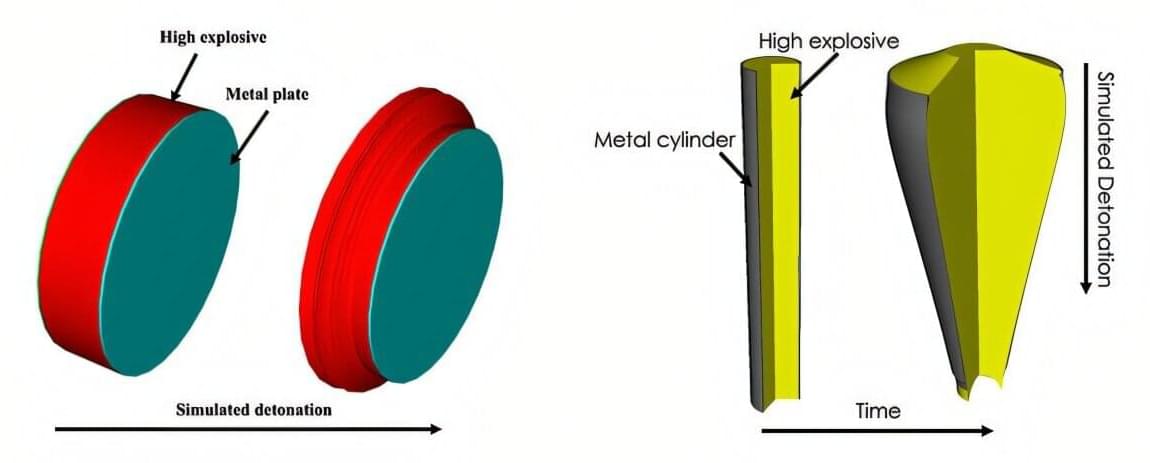For the first time, a team of researchers at Lawrence Livermore National Laboratory (LLNL) quantified and rigorously studied the effect of metal strength on accurately modeling coupled metal/high explosive (HE) experiments, shedding light on an elusive variable in an important model for national security and defense applications.
The team used a Bayesian approach to quantify metal strength uncertainty with tantalum and two common explosive materials and integrated it into a coupled metal/HE model. Their findings could lead to more accurate models for equation-of-state-studies, which assess the state of matter a material exists in under different conditions. Their paper —featured as an editor’s pick in the Journal of Applied Physics —also suggested that metal strength uncertainty may have an insignificant effect on result.
“There has been a long-standing field lore that HE model calibrations are sensitive to the metal strength,” said Matt Nelms, the paper’s first author and a group leader in LLNL’s Computational Engineering Division (CED). “By using a rigorous Bayesian approach, we found that this is not the case, at least when using tantalum.”
